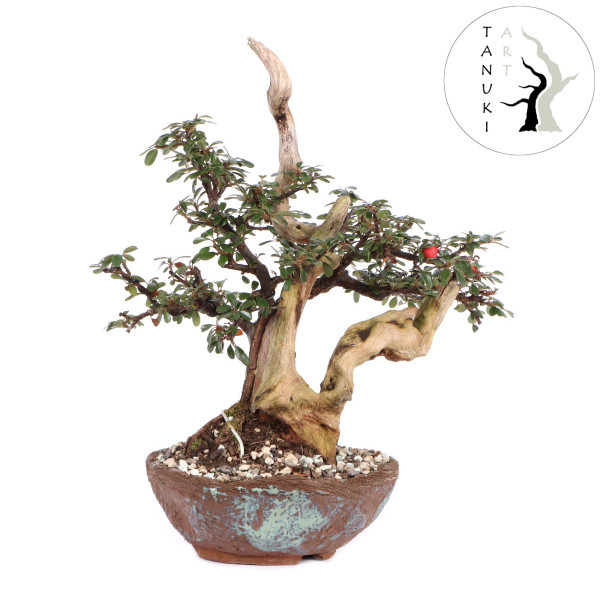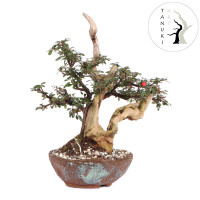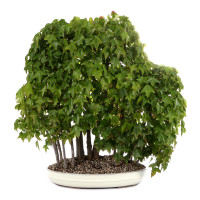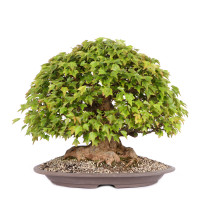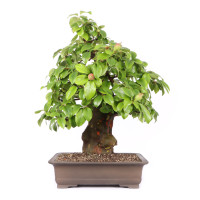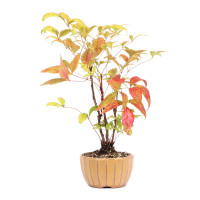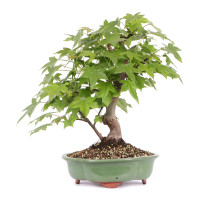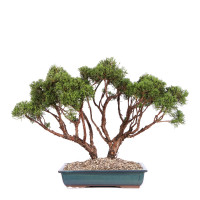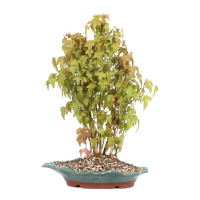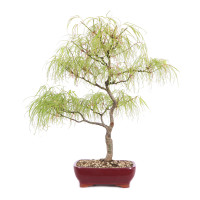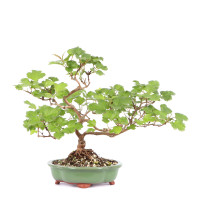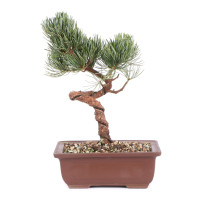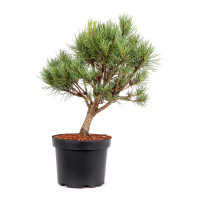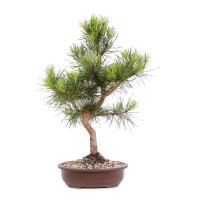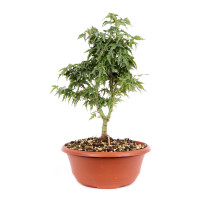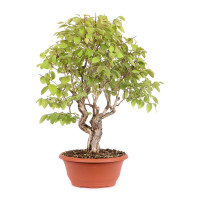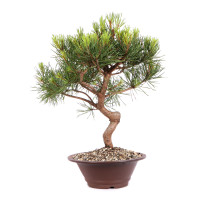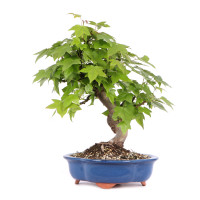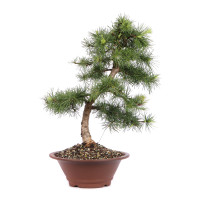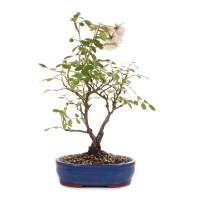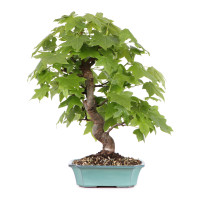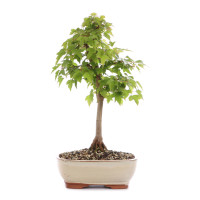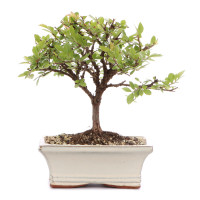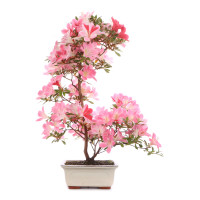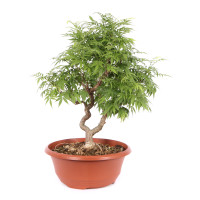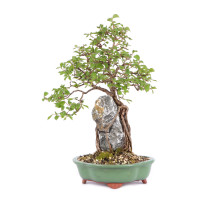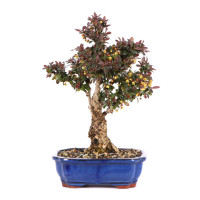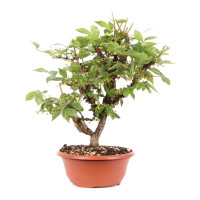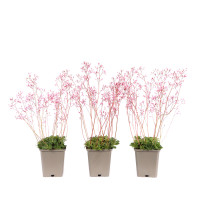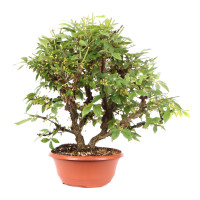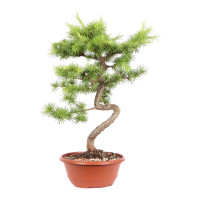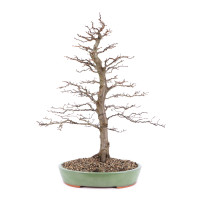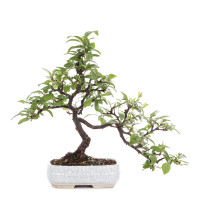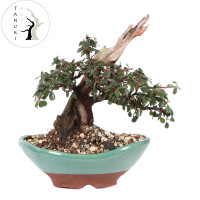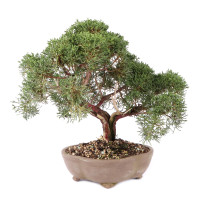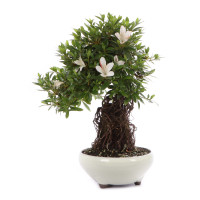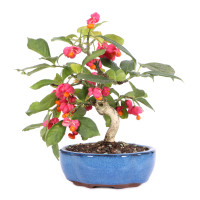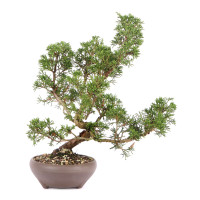- Order number: 1743-KT-25-0354
- Addtion: Tanuki
- Height: 30 cm (incl. pot)
- Foliage: evergreen
- Bonsai Pot: ceramic pot
- Year: 2019
- Characteristics: with flowers, with fruits
- Origin: Germany
Cotoneaster dammeri ‘Skogholm‘ - Bearberry Cotoneaster 'Skogholm'
General:
The bearberry cotoneaster is found naturally in China. It grows there as a creeping and evergreen shrub. The plant belongs to the rose family with the corresponding flowers and fruits in miniature form.
Care as a bonsai:
The bearberry cotoneaster is made for bonsai design. Its leaves, flowers and fruits are small, absolutely compatible with pruning and will sprout again and again. It blooms from May to June with small white flowers and then gets red berries from September. These stick to the plant even in winter. It is suitable for all forms of design, especially since they can be wired and cut all year round. It can be kept very small for many years. The bearberry cotoneaster is also suitable as underplanting for forests or landscapes (Saikei). When wiring, care should be taken that the small leaves are not wired in. This is of course not that easy with the large number of leaves. The cotoneaster does not make any special demands on its location, but extremes should still be avoided. The lighter the location, the more pronounced the bloom and fruit formation.
Special features of the variety Bearberry cotoneaster 'Skogholm':
The Bearberry cotoneaster 'Skogholm' was selected in Sweden in 1941 and is particularly strong. As a result, it offers good conditions for growing larger bonsai with relatively small leaves. The leaves are small (1-2 cm long), dark green, with a matt sheen and sometimes turn yellow-orange in autumn. Nevertheless, the species is evergreen and also produces the typical flowers and fruits.
About Tanuki:
A special technique for quickly obtaining expressive and very old-looking bonsai is to "marry" a plant to a dead piece of wood. This usually involves joining long grown plant material to a nicely shaped piece of wood. The plant and the wood are sometimes intricately worked and over time become fused into a single unit. The artistic connection often resembles very old specimens collected in nature (Yamadori) and often looks deceptively real.
Bonsai created by this technique are called "Tanuki" in Japan. The name "Tanuki" also stands for the native "tanuki", which appears in mythology as a mythical creature. In the legends he appears as a cunning quick-change artist, who likes to lead people behind the light, but through these abilities often emerges as the hero of a story.
About the artist:
All "Tanuki Art" - bonsai were designed by the artist Mulyadi. Mr. Mulyadi has been professionally involved in the design of bonsai for many years. In his home country Indonesia he creates extraordinary bonsai out of different plant material. In addition to the implementation of classical forms of design, he has developed his own style and is always looking for creative solutions. The application of the Tanuki technique is his absolute passion and he has developed special methods to achieve unique results in terms of craftsmanship and artistry. "Tanuki Art" - Bonsai are available exclusively in the Bonsaischule Enger.

